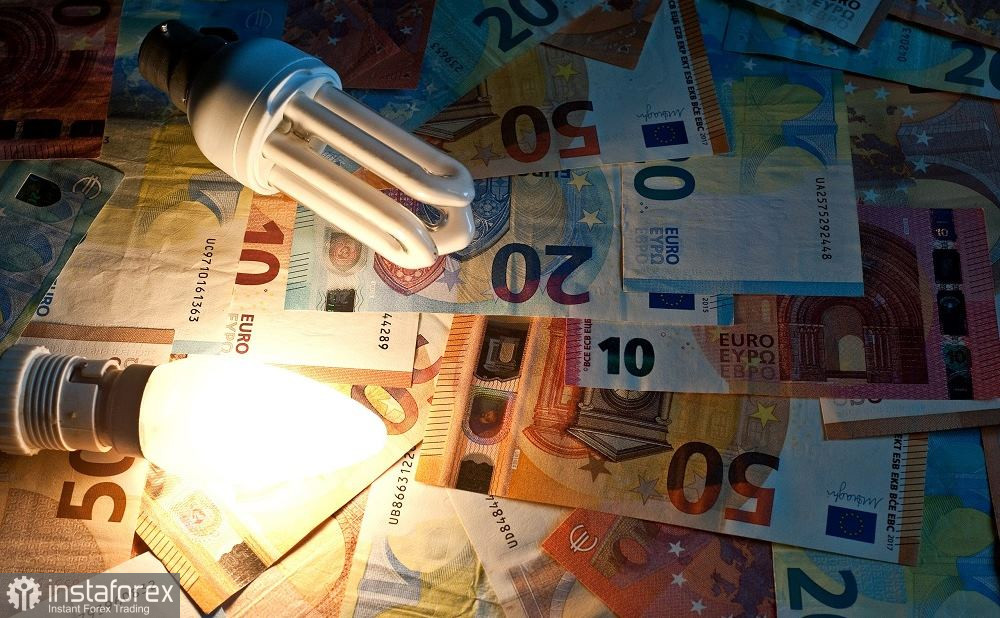The European Central Bank continues to demonstrate a hawkish attitude amid contradictory data on inflation growth in the eurozone. Last week, a report on the growth of the consumer price index was published. The overall CPI was in the red zone, falling to 9.2% (with a forecast decline to 9.6%). While core inflation, excluding volatile energy and food prices, on the contrary, continued to gain momentum, rising to a record 5.2%.
The structure of the report suggests that the growth of energy prices slowed down in December to almost 26%. While food, alcohol and tobacco rose in price by almost 14%, services increased in price by 4.4%, and industrial goods by 6.4% (in November – by 6.1%).

This suggests that the decline in overall inflation is due to warm weather in the European region: the purchase price of gas in European countries in December was almost five times lower than in August. The cheapening of the blue fuel had an impact on electricity prices, as many European power plants produce electricity using gas. In particular, in France, the purchase price of electricity at the end of August exceeded €1,000 per megawatt-hour, and at the end of last month it dropped to €240. Germany also contributed to the slowdown in overall inflation: last month, German government provided a one-time compensation for electricity bills.
In other words, the slowdown in the overall CPI was not due to the ECB but Mother Nature, which spoils the European region this year with warm days. The growth of the core consumer price index indicates that the problem of high inflation has not only not been resolved, but is getting worse.
Representatives of the European Central Bank understand this very well, and therefore do not lower the degree of intensity in their rhetoric. Moreover, members of the ECB have been sounding clear hawkish signals lately. For example, Latvian central bank governor Martins Kazaks said that he expects a "significant" rate increase at the February and March meetings, after which the steps could become "less as necessary." We are talking about two 50-point rate hikes. The ECB could then slow the pace of monetary tightening to 25 bps.
ECB Governing Council member Isabel Schnabel also called for further rate hikes this week, as "inflation will not subside on its own." In turn, Austrian central bank chief Robert Holzmann said there are no signs of weakening market expectations regarding inflation at the moment. However, he added that rates would need to "raise significantly to reach levels sufficiently restrictive to ensure that inflation returns to the target level." His colleague, Bank of Finland Governor Olli Rehn, made a similar statement yesterday, saying that rates should be raised significantly "in the next couple of meetings" to keep inflation in check.
As you can see, the members of the European Central Bank remain hawkish, at least in the context of the next two meetings. However, they prefer not to specify where the final point of the current cycle of tightening monetary policy is. For example, French central bank chief Francois Villeroy de Galhau said last week that it was desirable to peak interest rates by summer, "but it's too early to say at what level." At the same time, he stressed that rates will remain at the peak level "for as long as necessary."
Thus, now we can say with confidence that the ECB will raise rates at the February meeting by 50 points and very likely by the same amount at the March meeting. This scenario is the base case despite a slowdown in overall inflation in the euro area.
Meanwhile, the prospect of a 50-point Fed rate hike at the February meeting is highly questionable. For now, the CME FedWatch Tool says there is a 74 percent chance of a 25 basis point rate hike next month. If today's U.S. inflation report comes out at least at the predicted level (not to mention the red zone), the probability of the 25-point scenario will increase to 80%–90%. In this case, the difference in interest rates between the U.S. and Europe will continue to shrink, and this circumstance will provide background support to the euro. However, this fundamental factor will play on the side of the euro even before the actual implementation—the hawkish attitude of the ECB against the background of slowing inflation in the United States will allow buyers of EUR/USD to organize another offensive upward, to the borders of the 8th figure.
Technically, the pair is currently testing the upper line of the Bollinger Bands indicator on the daily chart, which corresponds to 1.0750. Overcoming this target will open the way not only to the next price barrier at 1.0800, but also to the main resistance level at 1.0930 (the upper line of the Bollinger Bands indicator, coinciding with the upper boundary of the Kumo cloud on the W1 timeframe). A slowdown in U.S. inflation, a softening of the Fed's rhetoric, and an increase in the hawkish mood of the ECB will create the necessary information background for the implementation of the upward scenario.
 English
English 
 Русский
Русский Bahasa Indonesia
Bahasa Indonesia Bahasa Malay
Bahasa Malay ไทย
ไทย Español
Español Deutsch
Deutsch Български
Български Français
Français Tiếng Việt
Tiếng Việt 中文
中文 বাংলা
বাংলা हिन्दी
हिन्दी Čeština
Čeština Українська
Українська Română
Română

